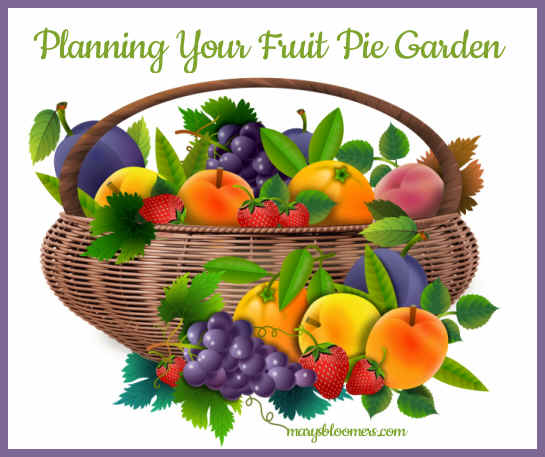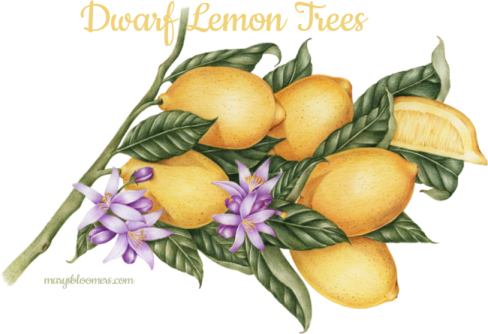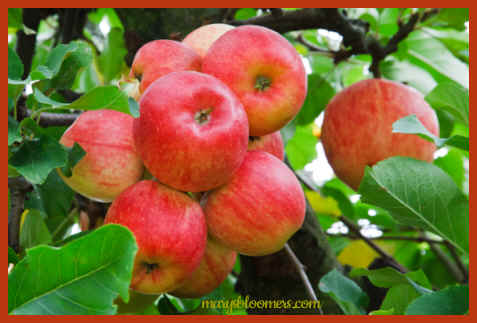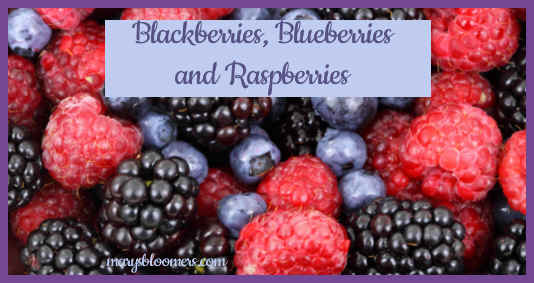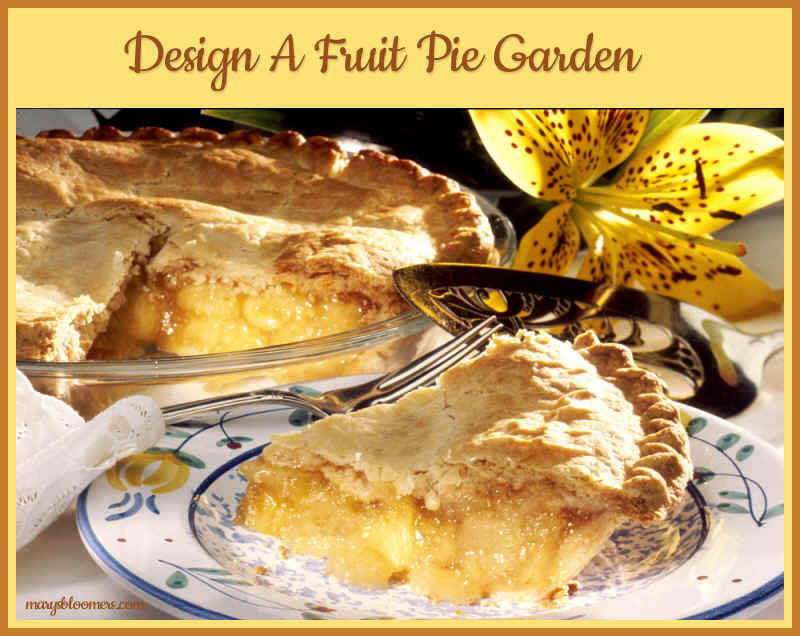
| While I was making and
preserving apple pie filling, and choosing trees for a planned
mini-orchard in my head, the Fruit Pie Garden design came to me. I always
preserve my berries as jams and fillings. So, I can plant a small-space
fruit orchard and berry patch. Grow the fruits you wish to grow to fill
your homemade pies and tarts. That's the Fruit Pie Garden.
Dwarf varieties of fruit trees that
bear in half the time of full-sized trees, are easy to maintain. I
choose those that are hardy and survive winter in my planting zone. You
can also bring potted dwarf fruit trees that go dormant indoors for the
winter. Many do well and keep their leaves. I have a Meyer Lemon tree
that comes in handy in the winter, and it makes a gorgeous indoor tree.
To round out your pie-baking and preserves garden, grow a berry patch
with some dwarf everbearing varieties of fruit, if you wish to preserve
jams and syrups. My choice of trees are based on a few factors. They must be truly dwarf, and reach no higher than 8 ft. at maturity. Whether they do that naturally, or can take an annual pruning to keep that height, that's the deal. I also choose self-fertile trees. I don't want to have to get a pair for pollination. My trees are pollinated all summer by bees, and butterflies, as well. When getting a pair of trees that need a companion to pollinate, I would have to be ok with getting another variety that i probably don't want, for the pollination to work. Indoor fruit trees can be hand-pollinated with a paintbrush, if they need it, too. To download my
free collection of vintage fruit pie and dessert recipes in
Just think about the fruit pies and preserves you love to eat, and design your garden around those. You can grow a huge amount of fruit in a small space garden. Berries can hang or be planted at the base of your fruit trees. |
||||||||||
| Grow fruit Vines and Go Vertical: grapes and strawberry vines are a natural for the vertical garden. Choose dwarf varieties of everything else. Berries do not do well indoors, so choose a hardy perennial that can handle winters outdoors. For eating fresh, and in pies, Jams and syrups. | ||||||||||
| Raised berry beds: After a few torturous seasons picking strawberries at ground-level, my back said "hey wait a minute". And having rabbit families decimate the berry patch, was turning me into Elmer Fudd. That's when the raised garden beds came into being. Two pretty white boxes in the frontyard among the flowers. Another few in the backyard. Keep them guessing. | ||||||||||
| Big Pots: When choosing big pots for little trees, remember that if you are growing some that have to over-winter indoors or in a garage, you don't want the pots to be too heavy. I grow mine in large pots that i've already figured out how heavy is too heavy to drag and lift. Some dwarf bush variety berries are available that love growing in a pretty pot on the patio or deck. | ||||||||||
Imagine
Your Favorite Fruit Pies and Preserves. Then grow them. Consider growing a few herbs, like mint, that you use as garnish or as a condiment with fruit
One of my choices is the Meyer Lemon - If you love cooking or baking with lemons and making lemonade, the Dwarf Meyer Lemon Tree is awesome. Mine is growing indoors over the winter, and it's a great houseguest. Dark, shiny and fragrant leaves, lots of very pretty white flowers. They will be the fruit i pick in late summer. If you love citrus marmalades, this is the best lemon for cooking. Much less bitter and acidic than the ordinary grocery store lemon. A much better lemon that holds up well in a recipe. I intend to make a batch of my own Lemon Curd preserves using homegrown lemons. Lemon Curd is like a thick custard. It's delicious on buttered muffins, toast, or as a filling for mini tarts. Or by the spoonful. Citrus Marmalades can be made from a crop of lemons, limes and/or oranges. A dwarf Meyer Lemon and a dwarf Mandarin Orange will make lots of marmalade on their own. Add a pink grapefruit and heaven awaits you. Always check your hardiness zones - most citrus are not hardy, and most go dormant in winter and make terrible houseplants. But there are many dwarfs that do well as indoor plants. Persian Limes are one of them. I'm going to see what happens when i try to make lemon-lime marmalade. I'll call it 7Up Marmalade.
The Apple - I love to preserve my own apple pie filling and apple butter. It's a time-saver just dumping a jar of filling into a pie shell, instead of going through the whole pie filling cooking process. Dwarf varietieps of honeycrisp and other cooking appples are available (you need 2 different varieties of apples to pollinate, so choose another dwarf apple variety). My favorite eating apple is honeycrisp. I don't have room for 2 trees, and apple trees need more attention than other fruit, so i'll skip the apples. I'm a lazy gardener. Grow some fruit trees indoors - This means you can grow varieties that are not cold hardy outdoors in pots, and bring them inside for the winter, or just grow dwarf fruit trees as houseplants year-round. Those that need a chilling period outdoors to bear fruit can stay outdoors longer, and then be brought in. A 5-Gallon container is generally best for fruit trees. Use a quality well-draining potting mix. Surprisingly, there are lots of fruit trees that are ornamental, as well as fruiting, that can be grown indoors. Figs are happy indoors and outdoors. If your local nursery doesn't carry dwarfs and indoor fruit trees, Amazon has a large selection online. I like the 2 day shipping thing! Many reputable fruit tree growers and nurseries also sell their fruit trees on Amazon and Etsy. For a small space orchard outdoors, grow the trees in pots, and purchase varieties that are self-pollinating. Check out their selection here. Yes, you can grow dwarf banana, pomegranate, mango and other tropical delectibles in pots on your patio! If you're growing the trees outdoors year-round,
be sure to check your USDA cold hardiness map for the right varieties.
To view and
download my graphics collection of vintage fruit pie and dessert
recipes
|
